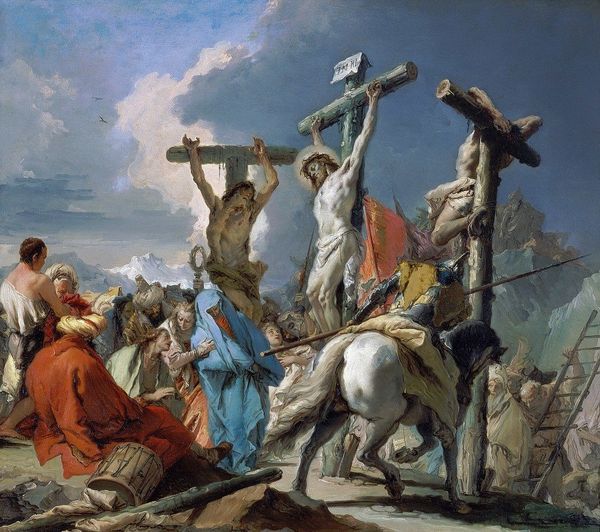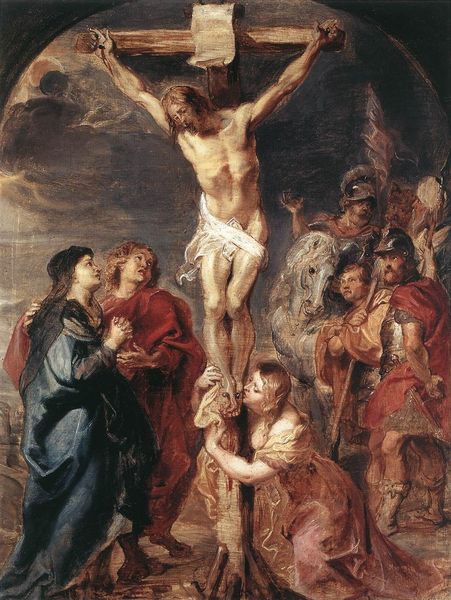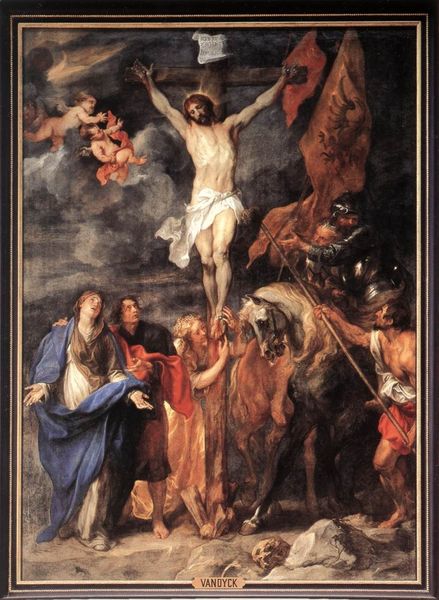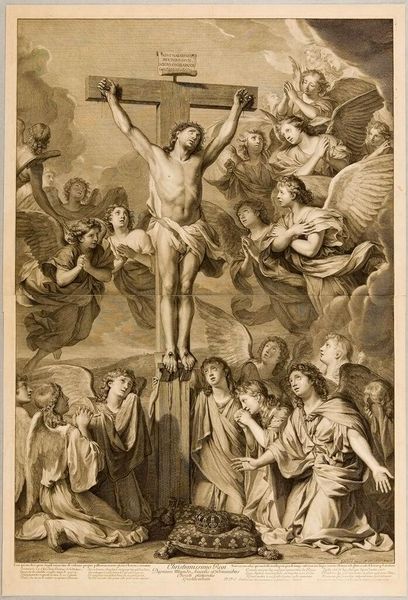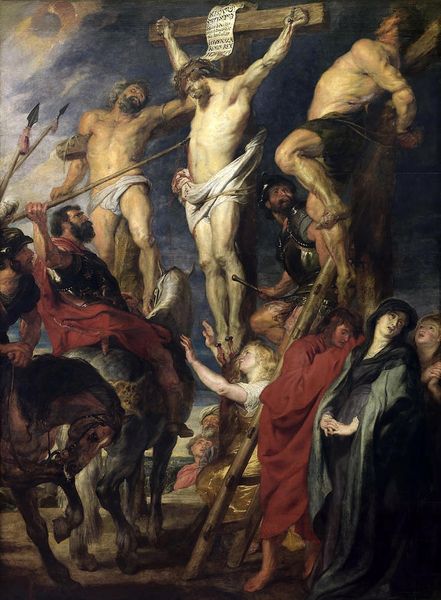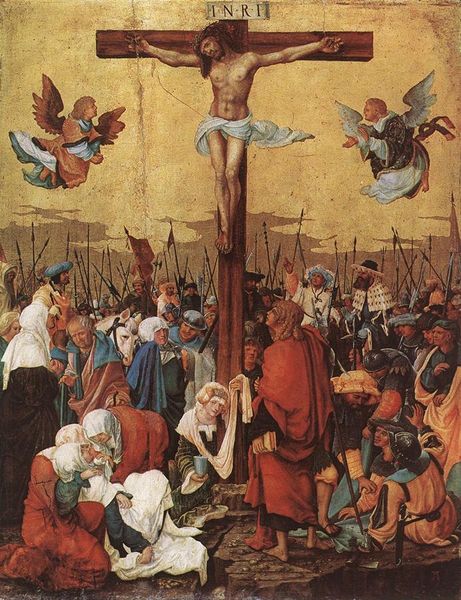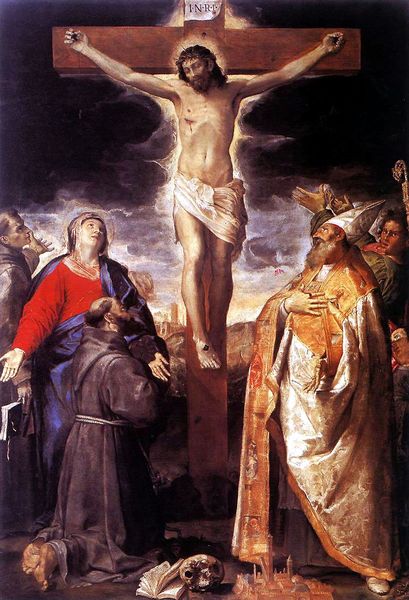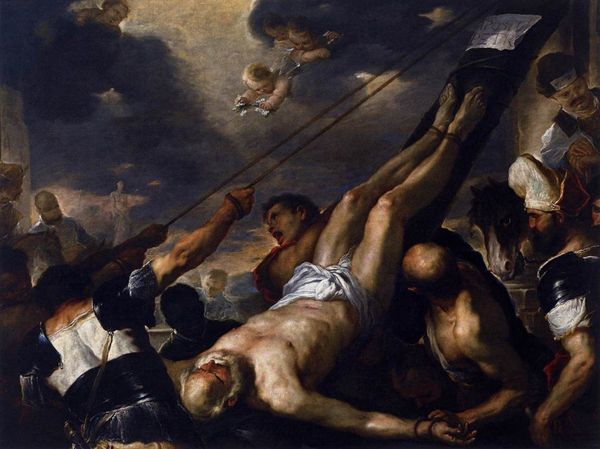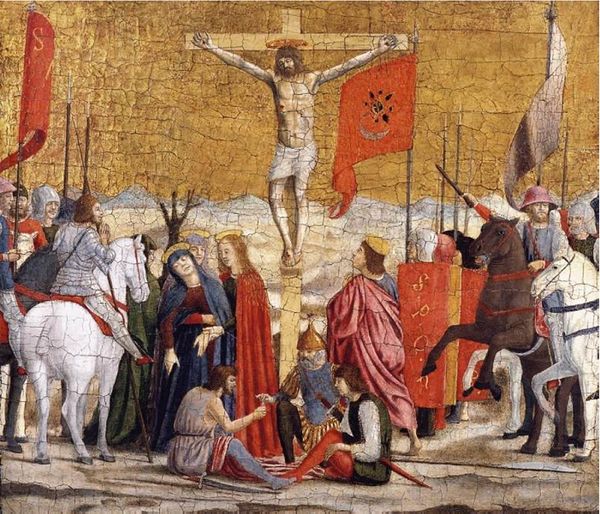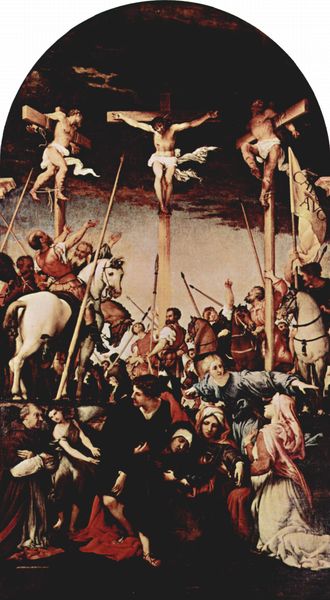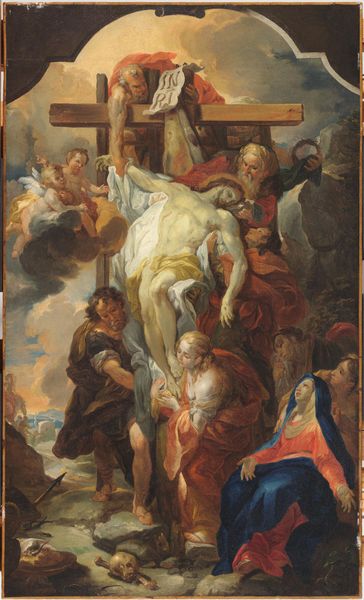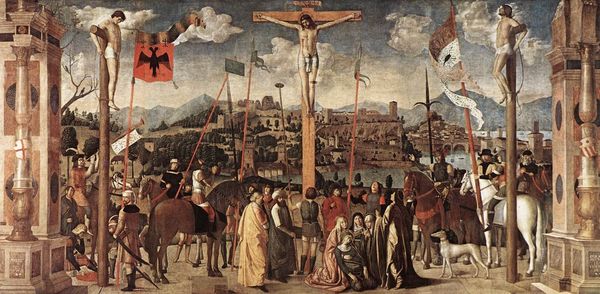
oil-paint
#
baroque
#
oil-paint
#
figuration
#
oil painting
#
christianity
#
mythology
#
history-painting
Dimensions: 123 x 162 cm
Copyright: Public domain
Curator: Looking at Bartolomé Esteban Murillo’s "The Martyrdom of St. Andrew," completed in 1682, one is immediately struck by the tension between earthly brutality and ethereal transcendence, wouldn't you agree? Editor: It's a whirlwind of emotions! There's this central figure, obviously suffering, but the light... it just lifts him right out of that grim scene. It's as though the artist were winking at us, suggesting that things might not be quite as tragic as they seem. Curator: The social context is vital. Commissioned during the height of the Spanish Golden Age, it embodies Counter-Reformation ideals, utilizing powerful emotional appeals to reaffirm faith. Notice the figures – the diverse reactions of the crowd, some jeering, others lamenting – it is meant to prompt self-reflection among viewers. Editor: Absolutely. It's a real masterclass in dramatic composition. That diagonal thrust of the cross against the hazy backdrop of architecture, plus the theatrical lighting... Murillo isn’t just showing us suffering; he’s orchestrating it, creating an operatic spectacle out of the everyday. Do you think that distracts from its message? Curator: I believe it amplifies it. The theatricality heightens the emotional intensity, and through that intensity, the message of faith persevering is further imprinted in the viewer’s memory. And what about that sweet dog? He seems to be only innocent observer, perhaps hoping his owner throws him a scrap of food? Editor: Yes! Poor little guy. So that is so important for me. He is like a metaphor or some symbol to the general population whom the events of faith seem distant to or a distraction from more routine survival worries. A slice of very smart symbolism on Murillo's part if I may add! Curator: Quite astute, and very perceptive, actually. Considering Murillo’s popular appeal, this interpretation seems more than plausible, and highlights a core tenant of his oeuvre and appeal across social divides. The art provides so many entry-points. Editor: Indeed. This work serves as a reminder that paintings of faith, far from being relics of the past, still possess the power to move and challenge us. It seems to me Murillo had so many different public relations teams embedded in one human form. Curator: Agreed. Whether one sees it as an act of religious devotion or a window into the soul of seventeenth-century Spain, Murillo’s painting remains a powerfully enduring artistic vision.
Comments
No comments
Be the first to comment and join the conversation on the ultimate creative platform.
